Berlinale Bloggers reply
Berlin, Berlin
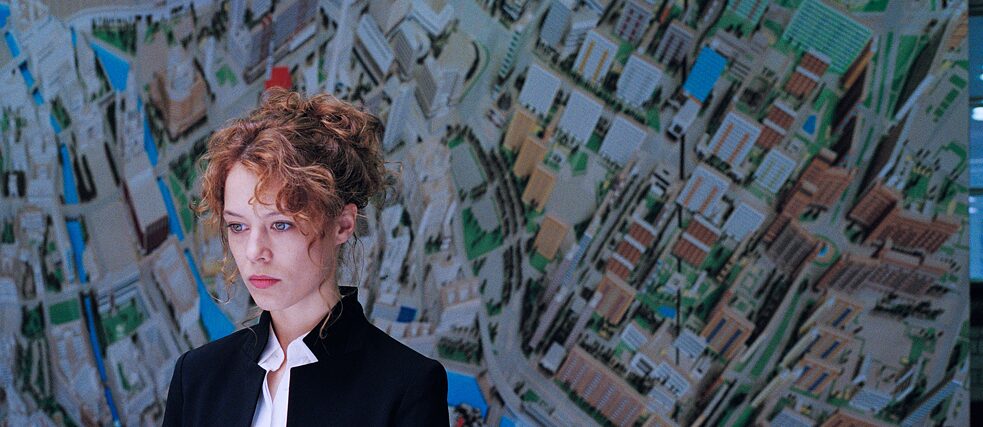
This year the programme selection includes several films in which Berlin plays the leading role. What do these films tell about Berlin – or what does Berlin tell the audience?
 Photo: © private
Gabriele Magro - Italien: Berlin playing a leading role in many of the films is a clear signal of how strong the bond between the festival and the city is. Many other international festivals around the globe take place in rather small cities, with no great attendance from locals. Yet the Berlinale has an identity of its own and seems to have found the perfect balance between “global” and “kiez”, with berliners queueing up with tourists and professionals from all over the world. This builds a strong sense of community and that special Berlinale atmosphere we all love.
Photo: © private
Gabriele Magro - Italien: Berlin playing a leading role in many of the films is a clear signal of how strong the bond between the festival and the city is. Many other international festivals around the globe take place in rather small cities, with no great attendance from locals. Yet the Berlinale has an identity of its own and seems to have found the perfect balance between “global” and “kiez”, with berliners queueing up with tourists and professionals from all over the world. This builds a strong sense of community and that special Berlinale atmosphere we all love.
 Photo: © private
Ieva Šukytė - Litauen: Christian Petzold’s film Undine shows a love for the city. Paula Beer’s character, who is a guide at the Berlin City museum, tells visitors about the complicated and long history of the city. Petzold brings the old Undine myth to Berlin, creating a love story not only between two people but also to the city. In contrast, Berlin Alexanderplatz shows a different side of today’s Berlin, where people without a passport cannot find a legal job and must work as drug dealers in order to survive and face the harsh reality that the majority of people don’t think of them as equal human beings.
Photo: © private
Ieva Šukytė - Litauen: Christian Petzold’s film Undine shows a love for the city. Paula Beer’s character, who is a guide at the Berlin City museum, tells visitors about the complicated and long history of the city. Petzold brings the old Undine myth to Berlin, creating a love story not only between two people but also to the city. In contrast, Berlin Alexanderplatz shows a different side of today’s Berlin, where people without a passport cannot find a legal job and must work as drug dealers in order to survive and face the harsh reality that the majority of people don’t think of them as equal human beings.
 Photo: © private
Erick Estrada - Mexiko: Like any big, vibrant and interesting city in the world, Berlin is an ever-changing place with tons of ups and downs, colour and grayness, stories and images. The movies talk about new times that are intimately related to old times and old lights, like delightful ghosts living in a city that walks into the future. To watch Berlin in so many different films gives you a good idea of how much inspiration you can find in these streets.
Photo: © private
Erick Estrada - Mexiko: Like any big, vibrant and interesting city in the world, Berlin is an ever-changing place with tons of ups and downs, colour and grayness, stories and images. The movies talk about new times that are intimately related to old times and old lights, like delightful ghosts living in a city that walks into the future. To watch Berlin in so many different films gives you a good idea of how much inspiration you can find in these streets.
 Photo: © Private
Photo: © Private
Sarah Ward - Australia: One of the great joys of Berlin is that, like the world’s other great thriving, bustling, big and busy cities – Tokyo and New York, for example – it constantly means different things to different people. It’s Berlin’s innate variety that shines through in its 2020 Berlinale appearances, whether representing the life that Nina Hoss’ unhappy character wishes she could regain in the nicely performed and shot but dramatically clichéd My Little Sister, or reflecting the inability of the present to escape the past in Christian Petzold’s bewitching Undine (complete with more emphasis on the city’s architectural history than one might expect at a film festival).
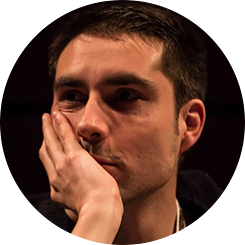 Photo: © private
Javier H. Estrada - Spain: In my opinion, the representation of the city shone especially in Christian Petzold’s Undine, a film that definitely reflects on Berlin’s history and construction. The main character shows foreign visitors how those responsible conceptualised the place to provide it with an identity in both West and East. Also, the film moves to the outskirts of Berlin, showing the huge variety of landscapes and shades of the city.
Photo: © private
Javier H. Estrada - Spain: In my opinion, the representation of the city shone especially in Christian Petzold’s Undine, a film that definitely reflects on Berlin’s history and construction. The main character shows foreign visitors how those responsible conceptualised the place to provide it with an identity in both West and East. Also, the film moves to the outskirts of Berlin, showing the huge variety of landscapes and shades of the city.
 Photo: © private
Yun-hua Chen - China: Berlin in Berlin Alexanderplatz is a place of despair and hope, violence and love, struggle and redemption. It is a place where certain groups and communities might seem invisible to mainstream society, but they all strive to build lives of their own and find their niches in the city. It is also a place where everything ends in a techno party. Starting a job in the drug lord’s gang? Go clubbing. Recovering after an amputation? Go clubbing. Bought a silver cash cannon? Go clubbing!
Photo: © private
Yun-hua Chen - China: Berlin in Berlin Alexanderplatz is a place of despair and hope, violence and love, struggle and redemption. It is a place where certain groups and communities might seem invisible to mainstream society, but they all strive to build lives of their own and find their niches in the city. It is also a place where everything ends in a techno party. Starting a job in the drug lord’s gang? Go clubbing. Recovering after an amputation? Go clubbing. Bought a silver cash cannon? Go clubbing!
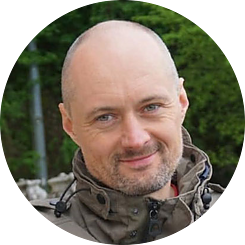 Photo: © private
Michal Zielinski - Poland: I had two experiences at the Berlinale that stuck with me. One day, I met a half-German, half-Peruvian producer who is currently developing a Japanese manga-style science-fiction film in collaboration with Hungarian artists. “OK, I am definitely in Berlin” – I thought. One of the most cosmopolitan cities in the world. Two days later, I saw the movie Purple Sea – a Syrian refugee girl’s smartphone footage filmed while she was fighting for her life on a sinking smugglers’ boat on the way to Europe. Berlin came up a few times. As a dreamland, a place of love and happiness. Write it down: we are the lucky ones in the lucky city.
Photo: © private
Michal Zielinski - Poland: I had two experiences at the Berlinale that stuck with me. One day, I met a half-German, half-Peruvian producer who is currently developing a Japanese manga-style science-fiction film in collaboration with Hungarian artists. “OK, I am definitely in Berlin” – I thought. One of the most cosmopolitan cities in the world. Two days later, I saw the movie Purple Sea – a Syrian refugee girl’s smartphone footage filmed while she was fighting for her life on a sinking smugglers’ boat on the way to Europe. Berlin came up a few times. As a dreamland, a place of love and happiness. Write it down: we are the lucky ones in the lucky city.
 Photo: © private
Anjana Singh - India: Berlin stands for diversity, openness, freedom and multiculturalism and is also the political centre of the country. Especially in multicultural cities like Berlin, one can feel the constant political, societal and social change that is fraught with conflict. The film Berlin Alexanderplatz moved me; it shows the story of the 30-year-old Francis from Guinea-Bissau. His fate ended in prison. In a city like Berlin, it is also very difficult for newcomers to gain a foothold. Historically, Berlin stands for the change to the democratic good, but often still shows the walls in people's minds; there is still a lot of room for social integration.
Photo: © private
Anjana Singh - India: Berlin stands for diversity, openness, freedom and multiculturalism and is also the political centre of the country. Especially in multicultural cities like Berlin, one can feel the constant political, societal and social change that is fraught with conflict. The film Berlin Alexanderplatz moved me; it shows the story of the 30-year-old Francis from Guinea-Bissau. His fate ended in prison. In a city like Berlin, it is also very difficult for newcomers to gain a foothold. Historically, Berlin stands for the change to the democratic good, but often still shows the walls in people's minds; there is still a lot of room for social integration.
 Photo: © Private
Egor Moskvitin - Russia: This Berlinale is different for me personally, because I recently started running on a daily basis. And since the festival schedule is pretty stressful, I do my runs sometimes after midnight and sometimes at sunrise. Just imagine how different the city can appear when you run in the middle of the night across Alexanderplatz just a few hours after watching the new adaptation of the film Berlin, Alexanderplatz! Since that movie updates a story told almost 90 years ago, I cannot but remember how the then brand-new TV series M for Murder was screened at last year’s Berlinale. Both these updates on classic material remind us of the power of the past to define the future. Undine explores the same topic. It made me think of how the urban experience shape personal and national experiences – and I am grateful for that.
Photo: © Private
Egor Moskvitin - Russia: This Berlinale is different for me personally, because I recently started running on a daily basis. And since the festival schedule is pretty stressful, I do my runs sometimes after midnight and sometimes at sunrise. Just imagine how different the city can appear when you run in the middle of the night across Alexanderplatz just a few hours after watching the new adaptation of the film Berlin, Alexanderplatz! Since that movie updates a story told almost 90 years ago, I cannot but remember how the then brand-new TV series M for Murder was screened at last year’s Berlinale. Both these updates on classic material remind us of the power of the past to define the future. Undine explores the same topic. It made me think of how the urban experience shape personal and national experiences – and I am grateful for that.
 Photo: © private
Hyunjin Park - Korea: Of the three films set in Berlin, Undine’s take on the city was impressive. The history of the construction Berlin, described by the heroine-as-historian, gave us a new idea of the interaction between the past and the present. For me, Berlin is a fascinating city, a mix of the past and a dynamic present to remember.
Photo: © private
Hyunjin Park - Korea: Of the three films set in Berlin, Undine’s take on the city was impressive. The history of the construction Berlin, described by the heroine-as-historian, gave us a new idea of the interaction between the past and the present. For me, Berlin is a fascinating city, a mix of the past and a dynamic present to remember.
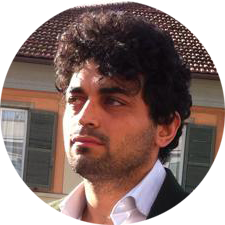 Photo: © Private
Andrea D’Addio - Italien: The main quality of Berlin is that each person can experience the same city differently – and this always in an authentic way. The films in the festival competition attest to this. Berlin is hell for the clandestine protagonist of Berlin Alexanderplatz and, as we see in Undine, it still constitutes a city tornbetween East and West, even if this ambivalence is now projected onto the future. The city is an open-air set: every director and screenwriter can find the stories and settings they are looking for.
Photo: © Private
Andrea D’Addio - Italien: The main quality of Berlin is that each person can experience the same city differently – and this always in an authentic way. The films in the festival competition attest to this. Berlin is hell for the clandestine protagonist of Berlin Alexanderplatz and, as we see in Undine, it still constitutes a city tornbetween East and West, even if this ambivalence is now projected onto the future. The city is an open-air set: every director and screenwriter can find the stories and settings they are looking for.
 Photo: © Private
Photo: © Private
Camila Gonzatto - Brazil: Berlin is a diverse city, and the films reflect this. Although located in modern times, Berlin Alexanderplatz or Undine, for example, show very different aspects of the city. While Undine presents an almost traditional Berlin, with its museums and historical buildings, Berlin Alexanderplatz brings out something of the underground character of the city. What you see in both films are construction sites – a characteristic of this city that is constantly reinventing itself. In Die letzte Stadt you can see the blossoming of GDR architecture, which is still present everywhere in the city. Berlin can thus be the stage for the most diverse narratives, precisely because of the different historical layers that are still present in the cityscape. The constant changes that this city is undergoing cannot completely erase the traces of its past.
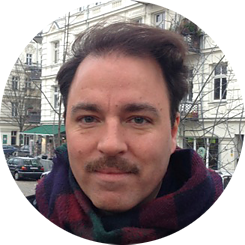 Photo: © Private
Photo: © Private
Philipp Bühler - Germany: Burhan Qurbani has made a strong statement with the remake of Berlin Alexanderplatz: Alfred Döblin’s Franz Biberkopf, a central figure in Weimar literature, becomes an African refugee of the year 2020. Despite enormous stylisation, there was a lot of reality in this. In Christian Petzold’s Undine, it was rather the other way round, despite sober staging and excursions into Berlin’s city history, the romantic myth retains its fairytale character. But I haven’t seen a film that will one day shape the image of Berlin’s world as Run Lola Run did in the nineties.
 Photo (Detail): © Goethe-Institut
Photo (Detail): © Goethe-Institut
Jutta Brendemühl - Canada: You know you’re in the heart of Europe when an Italian and a Dutchwoman invite us to see Berlin on screen, including a US director tracing the Wall in The American Sector. Berlinale 2020 showed us many “Berlins”: Undine, a watery, magical Berlin (and its history); Berlin Alexanderplatz turned Berlin Hasenheide. Hoss and Eidinger circled their Schaubühne in Berlin-Charlottenburg. No need for stand-in urbanscapes, like Toronto or Montreal for New York. Berlin remains Berlin after all, as the old song goes.